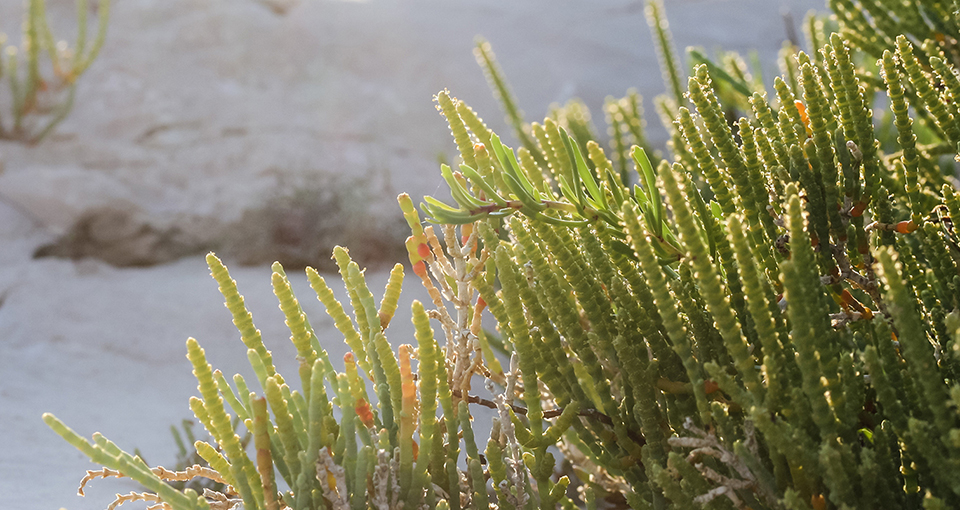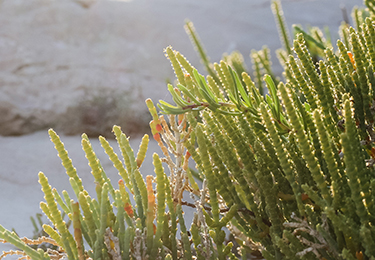
Watchlist
You can print out your watchlist and use it as a reminder for your purchase in the pharmacy.
Your watchlist currently contains no products.
Print


Salicornia
Salicornia
Botanik
The salt plant salicornia (salicornia iodineata) is native to the coastal regions of Central Europe. Here the 5-40 cm high plant which belongs to the chenopodiaceae family (meldweed) grows on bare edges of mud flats close to the sea. Its blossom is so inconspicuous behind small scale-like formations that it can almost be overlooked. The stalk branches out to a greater or lesser extent depending on the sub-type, it has a thick pulpy glassy look and, apart from the scales, is completely free of leaves.
mehr
Geschichte
Salicornia is an old vegetable plant. As a side dish for fish or also salads, it invaded the kitchen a long time ago. The old glass industry, however, also had a use for salicornia: in order to reduce the melting point during production certain species of the plant were put into the hot glass mass. This is the origin of the plant’s nickname “glass dripping“.
mehr
Inhaltsstoffe
Salicornia is definitely a halophyte. In contrast to other blossoming plants, it grows even on the saltiest coastal ground. It stores large quantities of this sea salt with its trace elements and mineral substances in its thick pulpy leaves. This is why it is so rich in iodine, potassium and sodium.
mehr
Hinweise/Besonderheiten
Iodine
Again and again one hears and reads that the Germans take in too little iodine with their food. But lack of iodine alone is not the reason for the enlargements of the thyroid gland which still occur. The absorption of iodine into the thyroid gland is also additionally hindered by the simultaneous presence of nitrates, fluorides, thiocyanates (e.g. cigarette smoke) or humin acids (e.g. in moor areas). In many regions today vegetables, and also the drinking water, are contaminated by using too much fertiliser with a high nitrate content. Human beings who live in such areas therefore have an increased requirement for natural iodine. The body needs the trace element iodine in order for the thyroid gland to function properly.
After all, iodine is the most important component for the formation of the thyroid gland hormone thyroxine. This hormone in turn regulates almost all metabolism processes. There is also close interplay between the oestrogen and thyroid gland balance. If insufficient thyroid gland hormones are produced, the oestrogen gains the upper hand. The same applies conversely: if the oestrogen production is low the thyroid gland hormones gain the upper hand. If the thyroid gland does not find optimum working conditions, it can react with an enlargement (swelling). Women have a higher requirement for natural iodine during pregnancy and breast-feeding periods
.
mehr
Produkte mit Salicornia
Jod Bio Salicornia Tabletten
Iodine Organic Salicornia Tablets
